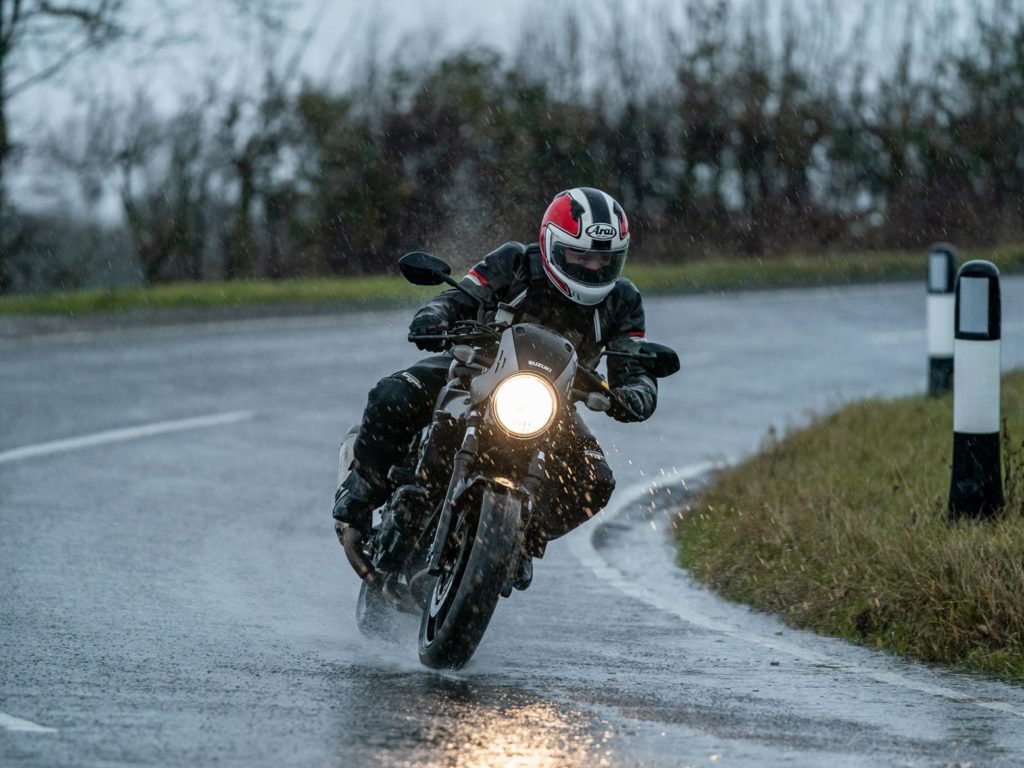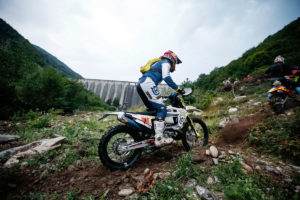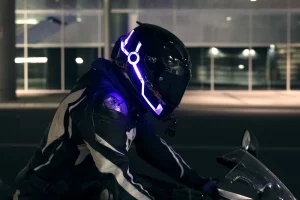Most riders dislike the rainy season as it halts their riding activity and makes their gatherings difficult. Roads are slippery, and so it becomes almost impossible for the riders to race. Extra care is to be taken if you’re heading towards the slippery road.
Some motorcyclists close the garage door just as the rain starts to fall. Then, they tuck the bike away until the sun shines again in the spring. However, riding in the rain can be enjoyable if you know what to anticipate and take measures accordingly to ride properly.
How to Ride Motorcycle Safely in Rain?
A motorcycle ride under heavy rain is such a difficult task, especially if someone has just started riding a motorcycle. For a convenient ride, one must be equipped with the essential motorcycle gear to prevent getting soaked up and wet.
Having said that, there are multiple items out there in the market that will help you while riding in the heavy rain. Sometimes, the road is way more slippery, and due to less friction, accidents happen more frequently.
Along with that, motorcycle ride is said to be dangerous whenever the weather outside is harsh. Therefore, with the help of experts` opinions, we have come to conclude some important factors that will enable the riders to stay safe while riding a motorcycle even in the ambiguous climatic changes.
Smoother and Careful Riding
When riding in difficult conditions like rain, you must adjust your riding technique. Acceleration of bikes should be made gently and in small increments to reduce any risks of slipping on the road. Gradually brakes should be applied so that you are not compelled to stab the brake lever in the final part of the braking zone. If you are not careful, small mistakes can lead to serious accidents.
Avoid Crossroads

Sometimes roads are filled with oil. This oil, along with rainwater, makes the slick substance more concentrated wherever on the road where cars come to a stop. Since you may not see this mess while riding, it’s wise to slow down as you approach junctions. Also, avoid running on yellow lights because if you have to turn or stop immediately, you’ll likely lose traction.
Having said that, yet again you might slip. If you’re stopped at a red light, check your rear-view mirror for cars approaching from behind. To avoid being surprised by cars stopping quickly in front of you, double your following distance. Such distance will protect you and will keep you safe from any sudden accidents.
Avoid the Sealer Pavement and those Manhole Covers
Maintenance hole covers and sealer pavement, which both act like black ice when it rains, are two items we’ve found that substantially limit traction in rainy weather. They are less of a concern when driving in a straight line, but you should still scan well ahead and watch for either as you turn the bike to enter an intersection.
If you come across either of these traction inhibitors, see if there is a line you can easily take around them first. If not, avoid slamming on the brakes or accelerating quickly, and rollover them. Make sure to maintain your hands relaxed on the clip-on’s and don’t lean the bike if you have to change lines or turn over a greasy part.
Select the Appropriate Gear
You can stay safe even in the most persistent storm avoiding it by wearing a decent waterproof rain suit. Some additional things include gloves, boots, and also an electric vest. This lets you enjoy a day spent in the rain without worrying about the circumstances because you have already taken the measures. Such waterproof gear provides additional warmth, but consider wearing numerous thin layers if you require even more.
The helmet, geared with a visor or an anti-fog visor with electric defrost function, is ignored. A clear shield is a must if you are riding on long winter nights. While riding a bike, make sure you do not get distracted in any way and stay active and focused on the road.
Using extra-warm gloves for excessively thick and ineffective, look for warm yet thin gloves that can easily handle bikes. On the other hand, a neck warmer may keep you warm but prevent you from rotating your head enough to check your shoulders, so you need to look for something that does not hinder your riding experience.
Look for a Dry Line
It has been observed that many individuals ride in a wet section of the lane when the rest of the lane is dry. Dry pavement provides better traction and handling. You should always stay in the driest part of the lane as much as possible if you want to avoid accidents.
Ensure the proper functioning of brakes and your motorcycle`s tires

To better yourself and your bike, you must carry out regular maintenance and inspection of your bike. Especially, pay heed to the tires, or else you`ll end up hurting yourself. Tires hold the major defense towards your safety. Along with that, the treads of the bike should also be in proper condition.
Treads should be better than new, and the deeper the treads, the better your defense will be. Moreover, treads are said to clear the water beneath your motorcycle tire`s rubber. Having said that, these old weary, and worn-out tires will have immensely condensed the built-in adhesion in the soaked, wet, and efficiency of the brakes will immensely and dangerously affect.
However, you have to make sure that the brakes are in good order at all times, no matter the cost. Along with that, the brake pads, brake linings, and discs all must be in good condition. Meanwhile, you should check that the brake fluid circulates properly to ensure the levels are in the correct order. Besides, it will ensure that there are no further leaks.
Check the shock absorbers
Before going out on your bike for cruising in the pleasant weather, make sure to replace the broken lights and other parts of your motorcycle. It would be best if you also cleared the rear mirrors. Above all, in the heavy rain, shock absorbers perform the role at their best.
Moreover, your motorcycle`s shock absorbers must be incorrect form and, if they need to be modified, do so before you get hurt and set them correctly. Furthermore, if you haven`t replaced the worn-out shocks, it will, later on, result in diminished braking ability, and you won`t be able to handle them properly.
Slow Down and Stay Alert
Mostly in rainy weather, road adhesion and visibility are often affected and reduced. For that reason, to reduce accidental hazards, one must be too careful while riding a motorcycle. Having said that, the reduced speed will help compensate for the risks on the road.
Getting slowed down upon the road will help riders to observe their surroundings. This will also help out the riders to be aware of the traffic around them. Besides, it will enable them to watch for drivers nearby that may turn rapidly without indicating.
FAQs
Is it safe to ride a motorcycle in the rain?
Riding in the rain is critical and keeping your hands warm and dry is difficult. However, if riders follow the safety protocols and maintain control over bikes’ speed in the rain, it is not as difficult as it seems.
What can you not get wet on a motorcycle?
Do not wash your motorcycle when the pipes or the engine is hot. Hot metallic surfaces and cold water don’t mix well, and sprinkling your bike with cold water after a long ride isn’t a good idea.
Why does the inside of my rain jacket become wet?
The main reasons for getting wet inside a raincoat are condensation and sweat. When water vapor comes into contact with a colder surface, such as the inside of your rain jacket, which functions as a thermal envelope to keep colder external air from chilling you, condensation occurs.
What’s the difference between a jacket that’s water-resistant and one that’s waterproof?
In the most basic sense, a waterproof jacket provides the best rain and snow protection. A water-resistant jacket, on the other hand, provides adequate but insufficient protection. A water-resistant garment, on the other hand, can only withstand so much rain.
Final Verdict
Rain riding will become more enjoyable as you follow these riding principles over time. If you ride according to rules and follow safety measures, you will be a better and more confident rider. With practice, riding gets better and helps you understand further tricks and tactics to stay vigilant and safe on the slippery road.
Riding in the rain is calming and soothing only if you are already prepared for it. So get your hands on the helmets and other important necessities that can help you enjoy the ride in the rain regardless of the tough weather conditions. These guidelines will help you ride safely in the rain; you should learn them because every rider will eventually confront wet circumstances.






